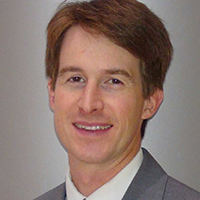Advocate ACO, Cerner push population health IT to reduce heart failure hospitalizations

Illinois health system giant Advocate Health Care has placed a significant priority on moving to value-based processes to better serve more than one million attributed lives in its accountable care organization.
One area Advocate has spent considerable time trying to understand is how to effectively manage at-risk patients via interventions and care management. The health system's initial approach was to focus efforts on the small percentage of patients that account for a large percentage of total spend. What the health system discovered, though, was that although that percentage of patients remains stable, the actual patients it reflects changes.
[Also: AI mines EHR data to predict diabetic patients at risk for kidney damage, study finds]
"Your high-cost patients today will not be tomorrow's high-cost patients," said Tina Esposito, vice president of information and technology innovation at Advocate Health Care. "The implication was that for care management, using this approach to identify patients eligible for the intervention meant that we were too late."
"There is so much hype around big data, AI, precision medicine, but what is often missing in these types of discussions is how practically it has made a difference or in this case improved outcomes."
Tina Esposito, Advocate Health Care
Claims data inherently is delayed given that it reflects spending that has already occurred, compounded by the time needed to transfer data from payer to provider. By the time a care manager had been dispatched to a patient, the event had occurred and the patient was back to baseline. For Advocate to realize a greater level of effectiveness, it would need to predict which patients were likely to incur a high-cost event and then mitigate.
So Advocate put population health and other clinical IT from Cerner to work on the problem. It created the Advocate Cerner Collaborative, a joint team responsible for this work.
"The analysis and work has been done as part of our collaboration with Cerner and leverages the company's HealtheIntent platform, which currently stores approximately 6 million patient records from Advocate, sourced by more than 40 different sources of claims data and five different EHR feeds reflecting care provided to patients across the entire care continuum," Esposito explained.
[Also: UPMC Hillman Cancer Center uses analytics to improve care quality with CMS Oncology Care Model]
The paradigm shift that population health has brought to Advocate has required the health system to look at outcomes through a different lens, said Tim Arnold, a manager and senior solution strategist at Cerner who works with Advocate.
"It no longer is sufficient to understand the outcomes of a single part of the care continuum, but to do this we need to capture as much information and piece it together to an individual patient," Arnold said. "A platform that can provide this type of utility can become a source for both analytic insight and operational support. In addition to enabling the ability to create advanced predictive models, we have an opportunity to embed them into workflow for clinicians."
For example, the predictive models being used help to prioritize patients for an outpatient care management program. With one million attributed lives in the ACO, it can be a challenge to narrow the list of outpatient care management candidates to those who will benefit most from the program.
"By leveraging all of the data available to us, we can hone in on patients with specific chronic diseases like heart failure who are at greatest risk for going to the hospital in the next 90 days."
Tim Arnold, Cerner
"By leveraging all of the data available to us, we can hone in on patients with specific chronic diseases like heart failure who are at greatest risk for going to the hospital in the next 90 days," Arnold explained. "If a care manager knows that a heart failure patient is at elevated risk for going to the hospital, then she will work quickly with that patient to establish an action plan that might prevent a hospitalization."
This differs from the usual approach to care management where the care manager works through a generalized assessment with the patient that may or may not zero in on the greatest hospitalization risk factors for that patient, Arnold added.
It's still early for the Advocate/Cerner collaboration, but he said the results are promising.
"With regard to our heart failure patients, we had previously seen fewer than 10 percent of these cases who were receiving appropriate action plans in a timely manner," Arnold said. "Now, more than 90 percent of the patients in our targeted program are receiving timely action plans – the goal is within 14 days – and are also receiving ratings of 'well-managed' or 'very well-managed' within a month of being identified by our predictive models."
Advocate is continuing to iron out the kinks of this program, but early results have shown an 11 percent reduction in hospitalizations related to heart failure. The next step is to conduct a randomized controlled trial with this program so that Advocate can better understand the effect it is having.
"There is so much hype around big data, AI, precision medicine, but what is often missing in these types of discussions is how practically it has made a difference or in this case improved outcomes," Esposito said. "Projects like this one help one see how the technology is utilizing all of the data available to take better care of a population."
As payers and providers have started to move away from fee-for-service reimbursement to alternative payment models, this has required a shift from focusing on the individual patient to focusing on large groups.
In a fee-for-service world, the role of the provider is to provide the best care to the individual that comes seeking care. With alternative payment models like capitation and shared risk, the provider is now required to match resources to the patients who will benefit most so that the outcomes across the entire population are optimized.
"This requires data mining and outreach efforts that are relatively new for healthcare providers," Esposito said. "If we are not successful in using our data to achieve these objectives on the frontline of healthcare then it is unlikely that we will be successful in alternative payment models."
Twitter: @SiwickiHealthIT
Email the writer: bill.siwicki@himssmedia.com



























